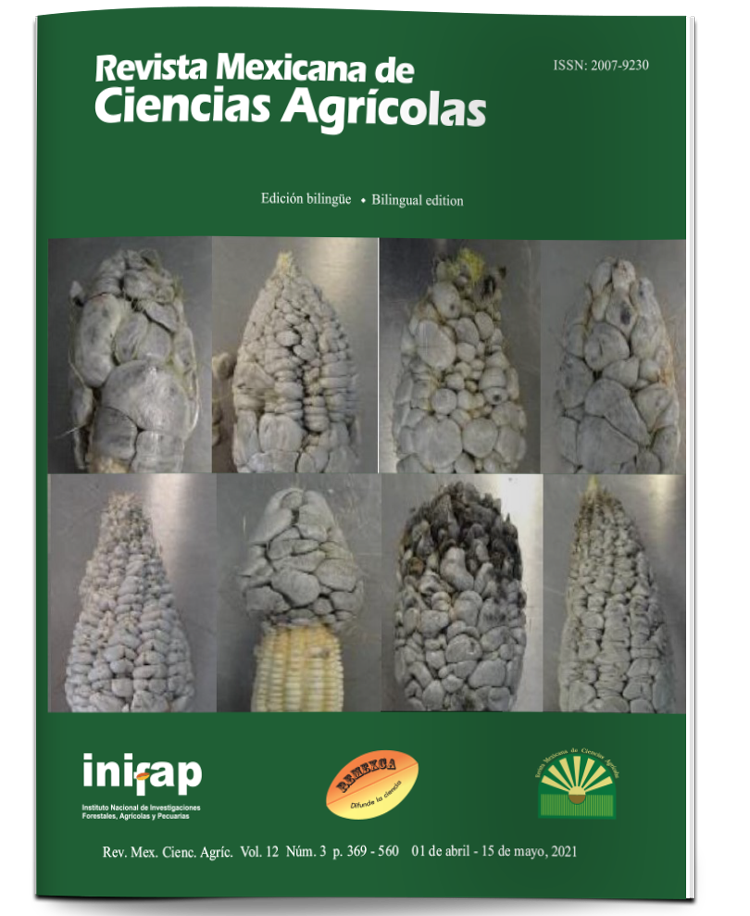Sample size to estimate the average of variables agronomic in cassava
DOI:
https://doi.org/10.29312/remexca.v12i3.2443Keywords:
Manihot esculenta Crantz, experimental design, rapid multiplication method, sample size and vegetative propagationAbstract
In agricultural experiments, measuring all plants that constitute an experimental unit is the most appropriate method for estimating averages. This study analyzed sample sizes (number of plants) for estimating averages of agronomic traits in cassava. The experiment for seedling production was conducted on four sowing dates: September 22, October 7, October 19, and November 25, 2017. The evaluated characters were plant height at planting, number of leaves at planting, number of leaves at 7 days after planting, number of leaves at transplanting, and plant height at transplanting. The seedlings were transplanted to the field on November 9, November 24, December 3, and December 26. Root characteristics and root yield were measured at harvest. The following statistics were measured: minimum, maximum, range, mean, median, variance, standard deviation, and coefficient of variation. The sample size was determined by resampling with replacement when the range of the 95% confidence interval (CI) was 10%, 20%, 30%, and 40% of the average estimate. Larger sample sizes were needed to estimate trait averages with a 95% CI range of 10% of the average estimate, i.e., when estimation accuracy was higher. In contrast, lower sample sizes were required to estimate averages of all characters in all planting times with a 95% CI range of 40%. For measuring seedling production and stem and root yield, 63 and 153 plants are sufficient to estimate averages when the range of the 95% confidence interval was 20%.
Downloads
Downloads
Published
How to Cite
Issue
Section
License
The authors who publish in Revista Mexicana de Ciencias Agrícolas accept the following conditions:
In accordance with copyright laws, Revista Mexicana de Ciencias Agrícolas recognizes and respects the authors’ moral right and ownership of property rights which will be transferred to the journal for dissemination in open access. Invariably, all the authors have to sign a letter of transfer of property rights and of originality of the article to Instituto Nacional de Investigaciones Forestales, Agrícolas y Pecuarias (INIFAP) [National Institute of Forestry, Agricultural and Livestock Research]. The author(s) must pay a fee for the reception of articles before proceeding to editorial review.
All the texts published by Revista Mexicana de Ciencias Agrícolas —with no exception— are distributed under a Creative Commons License Attribution-NonCommercial 4.0 International (CC BY-NC 4.0), which allows third parties to use the publication as long as the work’s authorship and its first publication in this journal are mentioned.
The author(s) can enter into independent and additional contractual agreements for the nonexclusive distribution of the version of the article published in Revista Mexicana de Ciencias Agrícolas (for example include it into an institutional repository or publish it in a book) as long as it is clearly and explicitly indicated that the work was published for the first time in Revista Mexicana de Ciencias Agrícolas.
For all the above, the authors shall send the Letter-transfer of Property Rights for the first publication duly filled in and signed by the author(s). This form must be sent as a PDF file to: revista_atm@yahoo.com.mx; cienciasagricola@inifap.gob.mx; remexca2017@gmail.
This work is licensed under a Creative Commons Attribution-Noncommercial 4.0 International license.



